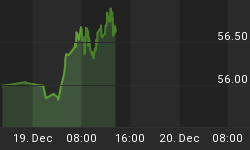Back on June 29, 2009, I presented research that improved the efficiency of the Faber market timing model for the S&P500 by some 50%. By efficiency I meant that the new and improved model made more money with less time in the market and with less draw down. The research can be found in this article, "Inflationary Pressures Are A Legitimate Concern."
The gist of the research was that stocks tended to under perform during times when the trends in gold, commodities, and yields on the 10 year Treasury bond were strong. The Faber model is a simple moving average model, yet we can improve the model's efficiency (for the S&P500) by moving to cash when (real or perceived) inflation pressures are strong as measured by a composite indicator that assesses the trends in gold, commodities, and yields on the 10 year Treasury bond.
In other words, the modified model is only long the S&P500 when prices are above the simple 10 month moving average and when inflation pressures (as measured by the trends in gold, crude oil and yields on the 10 year Treasury bond) are not extreme. The original Faber model uses only the simple 10 month moving average to time its buy and sell signals.
As we end October, the trends in gold, commodities, and yields on the 10 year Treasury bond have been surging . The composite indicator that measures these trends is shown in the lower panel of figure 1, a monthly chart of the S&P500. Therefore, this constitutes a sell signal for our modified Faber model. Referring back to figure 1, I placed the recent bull market (2002 to 2008) buy and sell points from this strategy on the price graph.
Figure 1. S&P500/ monthly















